Types of Rolex Crystals
The crystal piece of a watch is one of the most important, yet most fragile parts. To be useful, it must be transparent; otherwise the face of the watch will not be seen. It must also be durable, as it will be hit against things during typical wear. It must also be able to withstand being dropped, or set down roughly. Thus, glass is not a good option for a watch cover. Though glass provides a transparent view and lovely finish, it is not very durable.
Acrylic Rolex Crystals
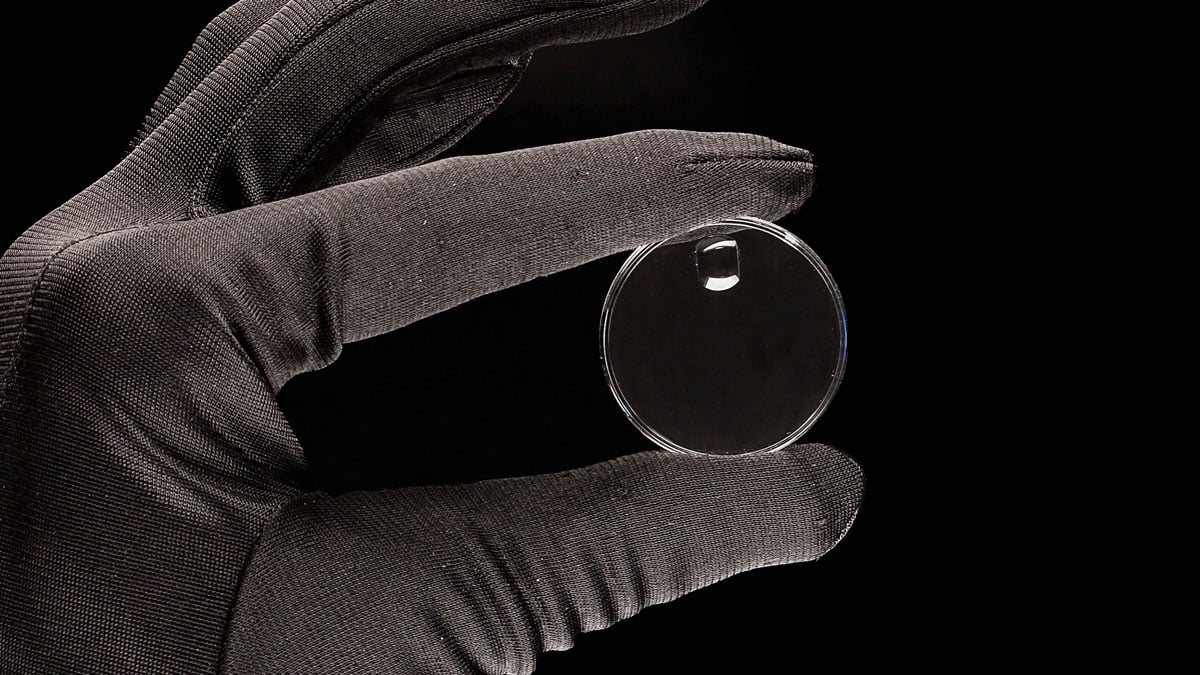
Rolex has combated this issue, using two varieties of crystals over the years in the production of their famous, luxury watches. Up until the late 20th Century, most watch crystals were actually acrylic like the one in the image above. The few that were not were made of mineral glass, or very expensive sapphire.
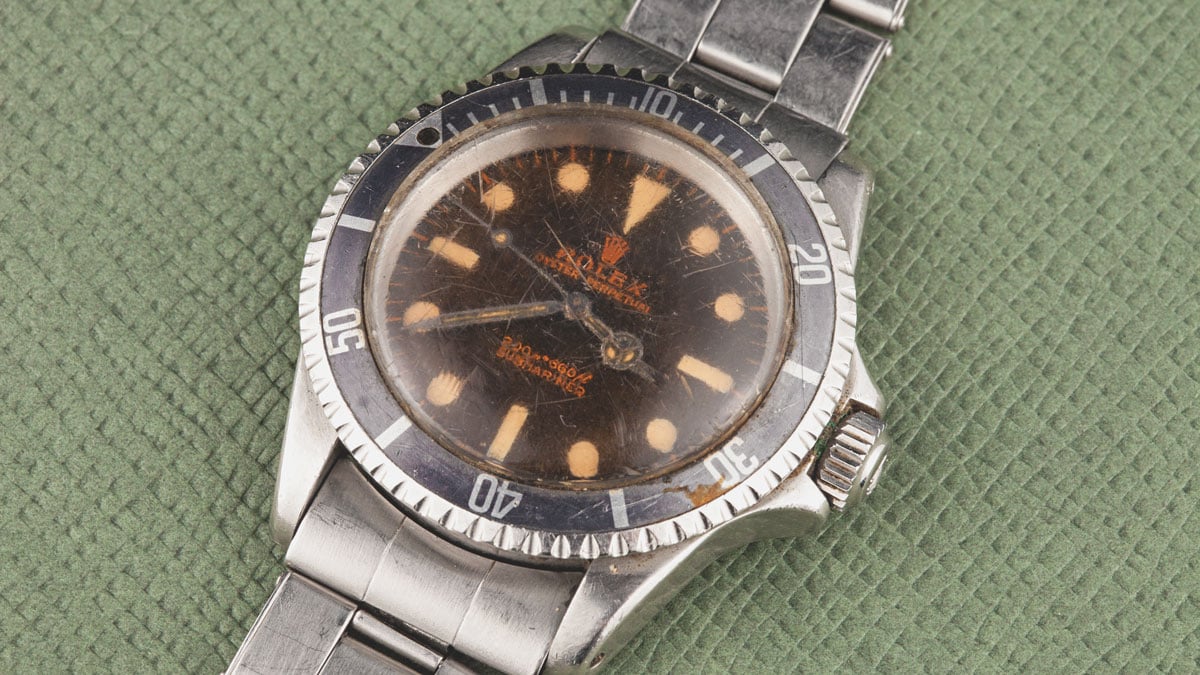
Acrylic has its advantages. It is very durable, easily resisting bangs. However, it is not scratch resistant, thus those bangs can still leave a mark. As you can see from the image above, an acrylic crystal can gather many scratches, especially one worn often. It would also eventually need to be replace in an effort to maintain the watch’s waterproofness. Despite it being easy to scratch, it was also easy to buff and polish, which gave it a continual "crystal" clear look. If it did break, it would not shatter, thus the watch would continue to work.
Rolex used acrylic in their watches, but slowly began introducing a synthetic sapphire replacement similar to the one in the image above. Rolex’s first sapphire crystal appeared on the Oyster Quartz in 1970 and then again in the Submariner in 1981.
Sapphire Rolex Crystals

Rolex’s synthetic sapphire crystals were created to be extremely hard and durable, proving extremely resistant to scratching, unlike acrylic. On the mohs scale, only diamonds are a harder element. A big advantage to the sapphire crystal is not only its strength and durability, but its brilliantly clear opacity. One disadvantage with synthetic sapphire crystal is that its hardness makes it prone to shattering. If shattered, the crystal will splinter, and could damage the interior of the watch. If Rolex has to replace a sapphire crystal, they require a complete watch service because of the high probability of crystal shrapnel landing inside the movement, potentially causing major damage.
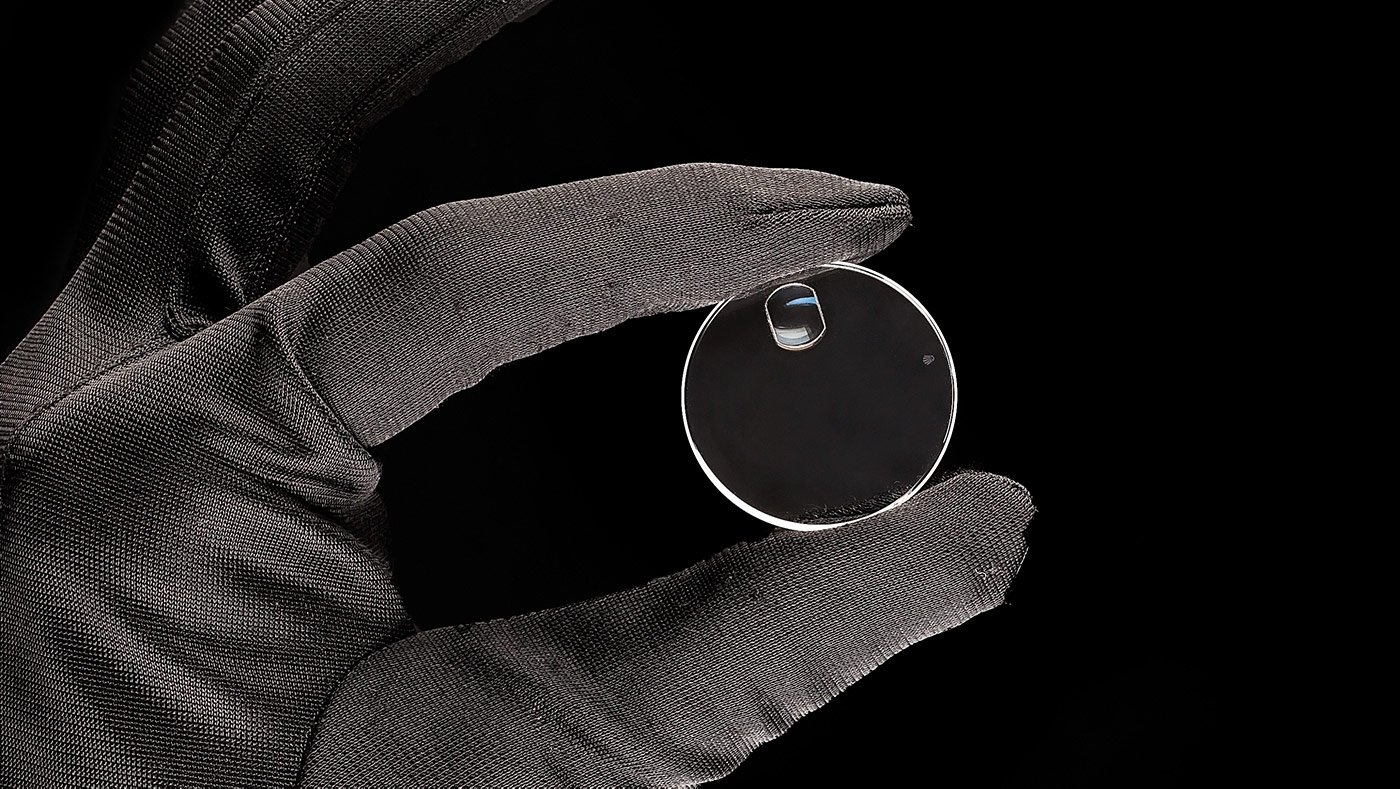
By 1991, the Rolex Perpetual was the last watch to possess a acrylic crystal. Now, all Rolex watches feature the sapphire crystal. Some versions, such as the Datejust also feature a small Cyclops lens, which magnifies the date through the sapphire crystal. Something that may go unnoticed on the sapphire crystals Rolex produces on their watches is their distinct etched logo at the base of the crystal - this is also a key component to look for when purchasing a used Rolex to ensure its authenticity.
Acrylic VS SAPPHIRE Rolex Crystals
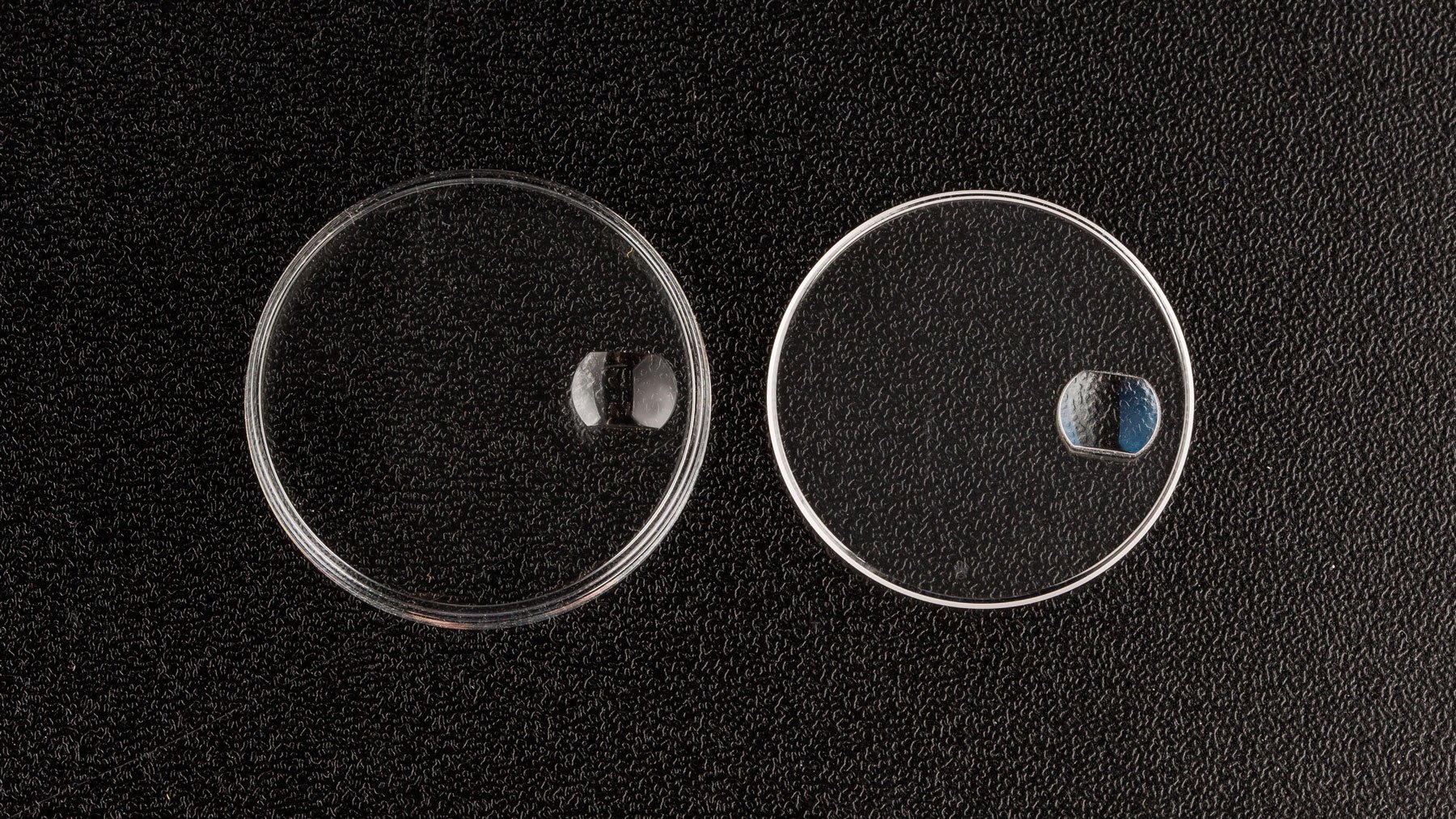
Comparing the acrylic crystal (left) and the sapphire crystal (right) presents many pros and only a few cons. Both offer protection for the delicate dial and movement of each watch, though the sapphire crystal is considered harder. This is not always a good thing, however, as the acrylic, if broken, will not shatter, while the sapphire crystal will, potentially causing major damage to the interior of the watch. There is also a marked difference in thickness between the two crystals. Acrylic is significantly thicker than the sapphire crystals Rolex uses. 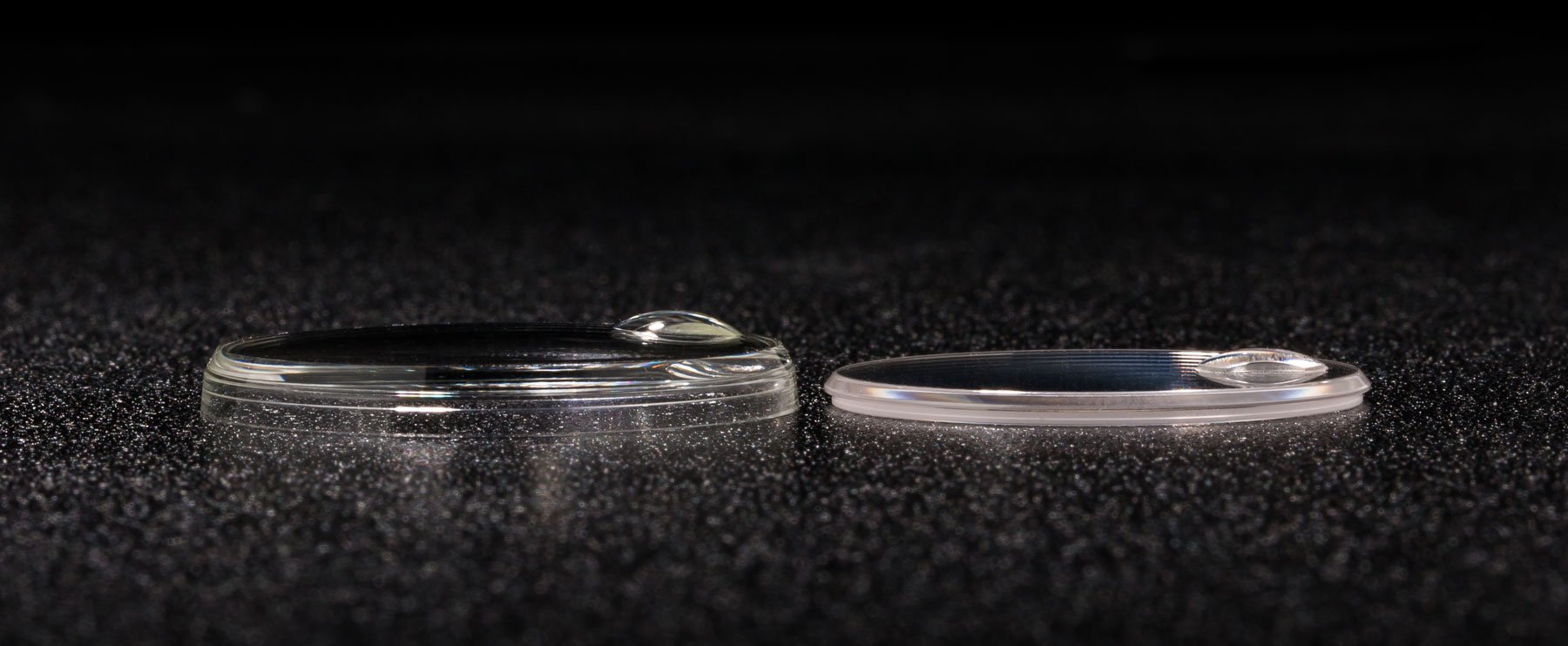
It is a give and take when deciding between the two. However, Rolex, now solely sporting sapphire crystal, has clearly made their choice.